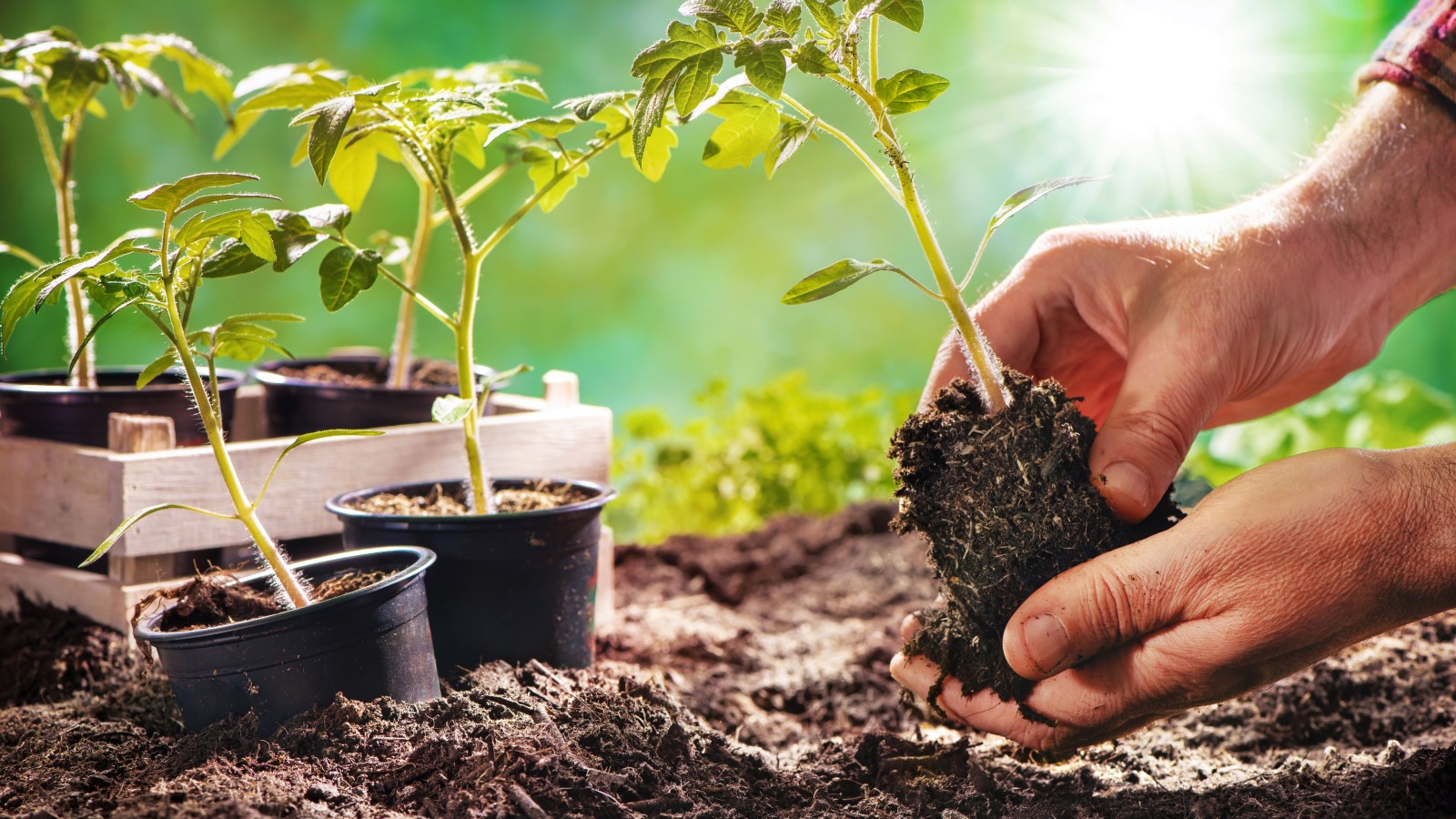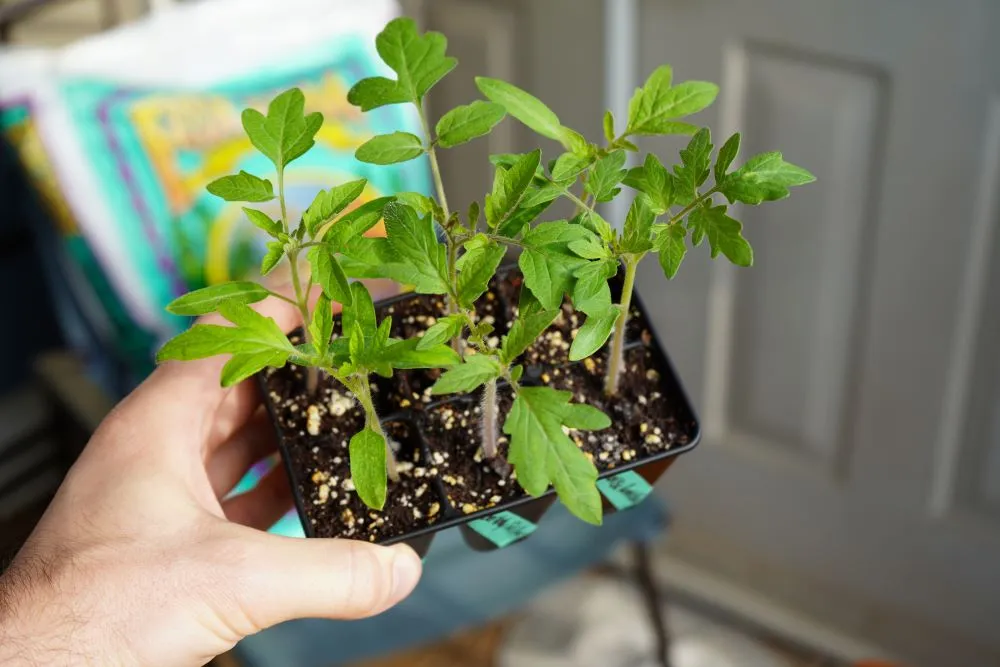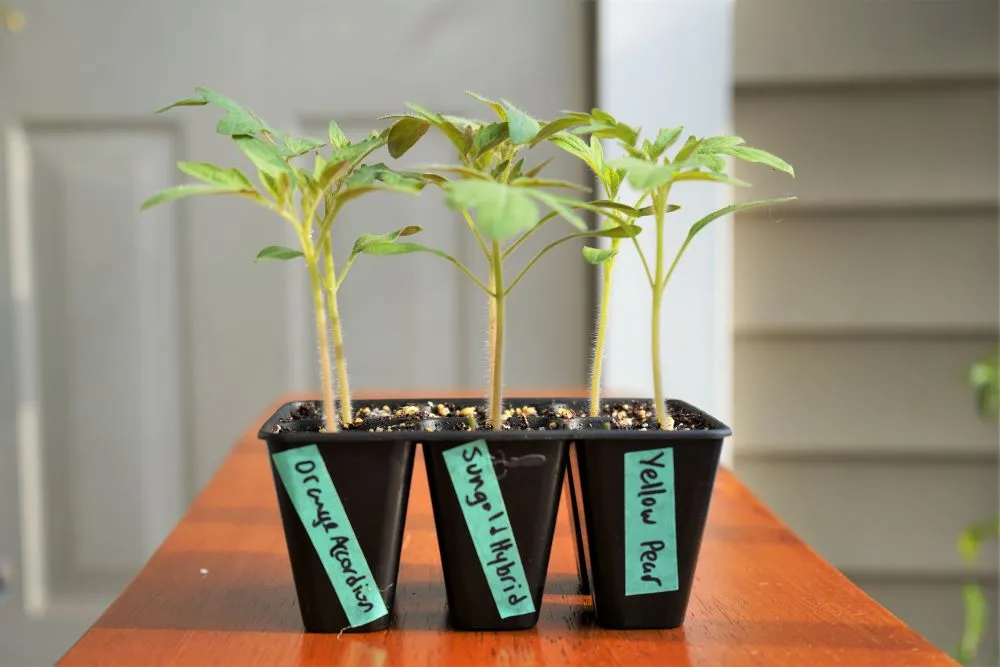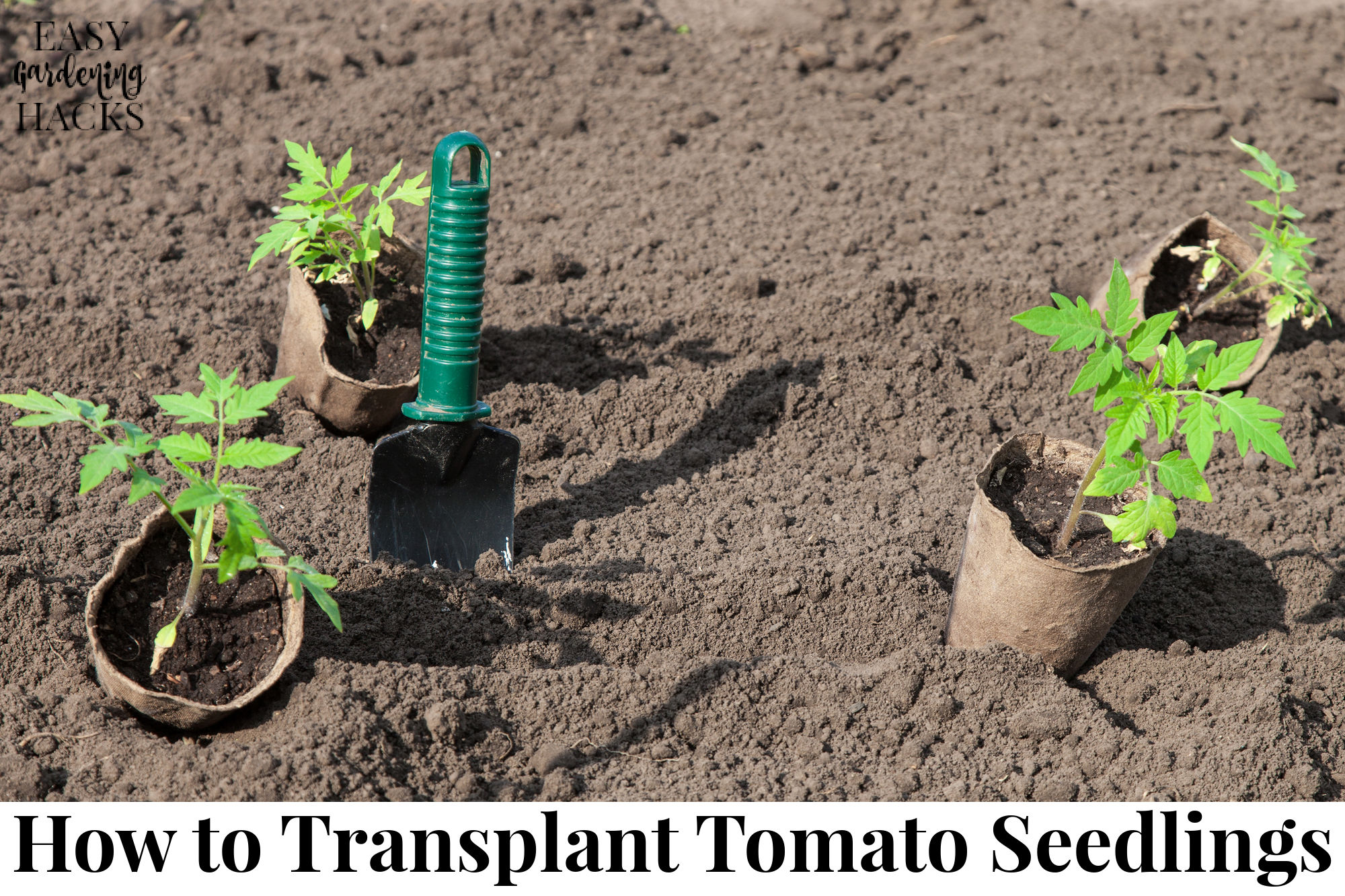Why Transplanting is Crucial for Healthy Tomato Plants
Transplanting tomato seedlings to bigger pots is a critical step in their development, playing a significant role in determining the overall health and productivity of the plants. When done correctly, transplanting can promote robust root growth, improve nutrient uptake, and enhance the plant’s ability to withstand environmental stresses.
Tomato seedlings typically outgrow their initial containers within 1-2 weeks after germination, at which point they require more space to develop a robust root system. By transplanting them into bigger pots, growers can provide the necessary room for the roots to expand, allowing the plants to absorb more nutrients and water. This, in turn, can lead to healthier and more vigorous plants, better equipped to produce an abundance of delicious fruit.
Furthermore, transplanting tomato seedlings to bigger pots can help prevent common problems associated with root bound plants, such as reduced growth rates, decreased fruit production, and increased susceptibility to disease. By giving the roots room to grow, growers can minimize the risk of these issues and create an optimal environment for their tomato plants to thrive.
In addition to promoting healthy root growth, transplanting can also help to improve the overall structure of the plant. By providing a larger pot, growers can encourage the development of a stronger stem and more extensive leaf growth, which can lead to better fruit production and a more robust plant.
Overall, transplanting tomato seedlings to bigger pots is a crucial step in their development, offering a range of benefits that can help to promote healthy growth, improve productivity, and reduce the risk of common problems. By understanding the importance of transplanting and doing it correctly, growers can give their tomato plants the best possible start in life, setting them up for success and a bountiful harvest.
Choosing the Right Time: When to Transplant Tomato Seedlings
Timing is everything when it comes to transplanting tomato seedlings to bigger pots. Transplanting at the right time can make all the difference in the success of the operation. But when is the right time?
The ideal time to transplant tomato seedlings depends on several factors, including weather, soil temperature, and seedling size. Generally, tomato seedlings are ready to be transplanted when they have 2-3 sets of leaves and the soil temperature has reached around 60-70°F (15-21°C).
Weather conditions also play a crucial role in determining the optimal transplanting time. Avoid transplanting during extreme weather conditions, such as intense heat, cold, or rain. Instead, choose a calm and sunny day when the seedlings will have the best chance to adjust to their new environment.
Seedling size is another important factor to consider. Tomato seedlings that are too small may not have developed enough to withstand the transplanting process, while seedlings that are too large may be more prone to shock. Aim to transplant seedlings when they are around 6-8 inches (15-20 cm) tall and have a well-developed root system.
To determine if your tomato seedlings are ready for transplanting, check for the following signs:
- Two to three sets of leaves
- A well-developed root system
- A height of around 6-8 inches (15-20 cm)
- Soil temperature of around 60-70°F (15-21°C)
By considering these factors and waiting for the right moment, you can ensure a successful transplanting process and give your tomato seedlings the best chance to thrive in their new pots.
Preparing the Perfect Pot: Selecting the Ideal Container for Transplanting
When it comes to transplanting tomato seedlings to bigger pots, the right container can make all the difference. A well-chosen pot can provide the necessary support for healthy root growth, while a poorly chosen pot can hinder the seedling’s development.
So, what makes a pot ideal for transplanting tomato seedlings? Here are some key characteristics to look for:
- Size: A pot that is at least 6-8 inches deep and 8-10 inches wide is ideal for transplanting tomato seedlings. This will provide enough room for the roots to grow and the soil to hold sufficient moisture.
- Material: Look for pots made from breathable materials such as terracotta, ceramic, or bioplastics. These materials allow for good air circulation and moisture transfer, which can help prevent waterlogged soil and root rot.
- Drainage: A pot with good drainage is essential for healthy root growth. Look for pots with drainage holes in the bottom or sides to prevent water from accumulating in the soil.
Some popular pot options for transplanting tomato seedlings include:
- Miracle-Gro pots: These pots are specifically designed for seed starting and transplanting, and feature a unique drainage system to prevent waterlogged soil.
- Biodegradable containers: These pots are made from natural materials such as coconut coir or bamboo, and can be easily transplanted into the garden without disturbing the roots.
- Terracotta pots: These pots are made from natural clay and are a popular choice for transplanting tomato seedlings. They provide good air circulation and moisture transfer, and can help prevent waterlogged soil.
By choosing the right pot for transplanting tomato seedlings, you can provide the necessary support for healthy root growth and set your seedlings up for success.
A Step-by-Step Guide to Transplanting Tomato Seedlings
Transplanting tomato seedlings to bigger pots can be a delicate process, but with the right steps, you can ensure a successful transition. Here’s a step-by-step guide on how to transplant tomato seedlings:
Step 1: Prepare the Soil
Before transplanting, prepare the soil in the new pot by filling it with a well-draining potting mix. Moisten the soil with water, but make sure it’s not too wet or dry.
Step 2: Handle the Seedlings with Care
When handling the seedlings, be gentle to avoid damaging the roots or disturbing the soil. Hold the seedling by the leaves or the soil, rather than the stem, to prevent damage.
Step 3: Remove the Seedling from the Old Pot
Carefully remove the seedling from the old pot, taking care not to disturb the roots. If the seedling is stuck, gently rock the pot back and forth to loosen it.
Step 4: Inspect the Roots
Inspect the roots of the seedling to ensure they are healthy and not circling. If the roots are circling, gently tease them apart with your fingers or a blunt instrument.
Step 5: Plant the Seedling in the New Pot
Plant the seedling in the new pot, making sure the soil level is the same as it was in the old pot. Firm the soil gently around the roots to secure the seedling in place.
Step 6: Water the Seedling
Water the seedling thoroughly after transplanting, making sure the soil is moist but not waterlogged. Keep the soil consistently moist during the first few days after transplanting.
By following these steps, you can ensure a successful transplanting process and give your tomato seedlings the best chance to thrive in their new pots.
Common Mistakes to Avoid When Transplanting Tomato Seedlings
Transplanting tomato seedlings to bigger pots can be a delicate process, and making mistakes can be costly. Here are some common mistakes to avoid when transplanting tomato seedlings:
Over-Handling the Seedlings
One of the most common mistakes when transplanting tomato seedlings is over-handling the seedlings. This can cause damage to the roots, stems, and leaves, leading to stress and reduced growth. Handle the seedlings gently and minimize handling to prevent damage.
Under-Watering or Over-Watering
Watering is critical when transplanting tomato seedlings. Under-watering can cause stress and reduced growth, while over-watering can lead to root rot and other problems. Water the seedlings thoroughly after transplanting and keep the soil consistently moist during the first few days.
Exposing Seedlings to Extreme Temperatures
Tomato seedlings are sensitive to extreme temperatures, and exposing them to temperatures that are too high or too low can cause stress and reduced growth. Keep the seedlings in a location with consistent temperatures between 65-75°F (18-24°C) during the first few days after transplanting.
Not Providing Enough Light
Tomato seedlings need adequate light to grow and thrive. Make sure to provide enough light for the seedlings, either by placing them in a sunny location or using grow lights. Aim to provide at least 12-14 hours of light per day.
Not Monitoring for Pests and Diseases
Pests and diseases can quickly spread and cause damage to tomato seedlings. Monitor the seedlings regularly for signs of pests or diseases, and take action quickly if you notice any problems.
By avoiding these common mistakes, you can ensure a successful transplanting process and give your tomato seedlings the best chance to thrive in their new pots.
Post-Transplant Care: Tips for Encouraging Healthy Growth
After transplanting tomato seedlings to bigger pots, it’s essential to provide the right care to encourage healthy growth. Here are some tips to help you care for your transplanted tomato seedlings:
Fertilization
Fertilization is crucial for promoting healthy growth in tomato seedlings. Use a balanced fertilizer that is high in phosphorus to promote root growth and fruiting. Apply the fertilizer according to the manufacturer’s instructions, and avoid over-fertilizing, which can damage the seedlings.
Pruning
Pruning is an essential part of tomato seedling care. Remove any weak or spindly growth, and trim back the seedlings to encourage bushy growth. This will help promote healthy growth and prevent the seedlings from becoming leggy.
Pest Management
Pests can quickly spread and cause damage to tomato seedlings. Monitor the seedlings regularly for signs of pests, such as aphids, whiteflies, or spider mites. Use organic pest control methods whenever possible, and avoid using chemical pesticides, which can harm the seedlings and the environment.
Watering
Watering is critical for tomato seedlings, especially after transplanting. Water the seedlings thoroughly, and keep the soil consistently moist during the first few days after transplanting. Avoid over-watering, which can lead to root rot and other problems.
Providing Support
Tomato seedlings need support as they grow. Provide a trellis or cage for the seedlings to climb on, and tie the stems to the support using twine or clips. This will help promote healthy growth and prevent the seedlings from becoming leggy.
By following these tips, you can provide the right care for your transplanted tomato seedlings and encourage healthy growth.
Monitoring Progress: How to Check for Successful Transplanting
After transplanting tomato seedlings to bigger pots, it’s essential to monitor their progress to ensure successful growth. Here are some tips on how to check for successful transplanting:
Checking for Signs of Stress
Transplanted tomato seedlings may exhibit signs of stress, such as wilting, yellowing, or droopy leaves. Check the seedlings daily for these signs, and take action promptly if you notice any problems.
Inspecting for Disease or Pests
Regularly inspect the seedlings for signs of disease or pests, such as white powdery patches, black spots, or tiny insects. Take action promptly if you notice any problems, and use organic pest control methods whenever possible.
Monitoring Growth
Monitor the growth of the seedlings, including the development of new leaves, stems, and roots. Healthy seedlings should exhibit vigorous growth, and you should see new growth emerging within a few days of transplanting.
Checking Soil Moisture
Check the soil moisture regularly, and adjust your watering schedule accordingly. Transplanted seedlings need consistent moisture, especially during the first few days after transplanting.
Providing Support
Provide support for the seedlings as they grow, including trellises, cages, or stakes. This will help promote healthy growth and prevent the seedlings from becoming leggy.
By monitoring the progress of your transplanted tomato seedlings, you can identify any potential problems early on and take action to ensure successful growth.
Conclusion: Maximizing Tomato Yield with Successful Transplanting
Transplanting tomato seedlings to bigger pots is a crucial step in maximizing tomato yield. By following the steps outlined in this article, you can ensure a successful transplanting process and give your tomato seedlings the best chance to thrive.
Remember, proper transplanting techniques are essential for promoting healthy growth and maximizing tomato yield. By avoiding common mistakes, providing the right care, and monitoring progress, you can enjoy a bountiful harvest of delicious and nutritious tomatoes.
Whether you’re a seasoned gardener or just starting out, transplanting tomato seedlings to bigger pots is a simple and effective way to boost tomato growth and maximize yield. So why not give it a try? With a little practice and patience, you’ll be enjoying a successful tomato harvest in no time.
By following the tips and techniques outlined in this article, you can:
- Improve root growth and nutrient uptake
- Enhance overall plant health and vigor
- Maximize tomato yield and flavor
- Enjoy a bountiful harvest of delicious and nutritious tomatoes
So don’t wait any longer to start transplanting your tomato seedlings to bigger pots. With the right techniques and a little care, you can enjoy a successful and productive tomato harvest.








